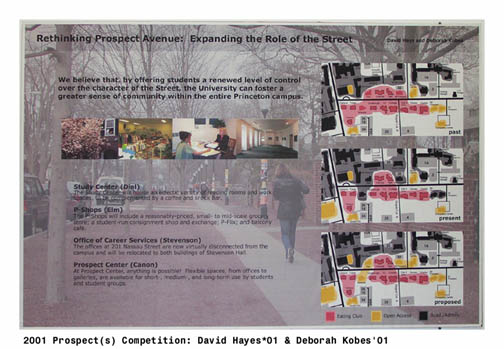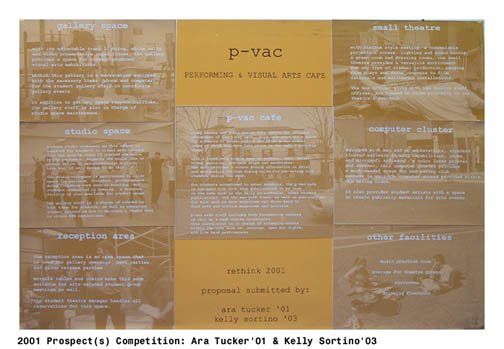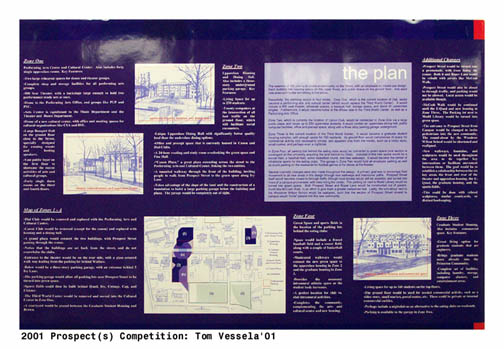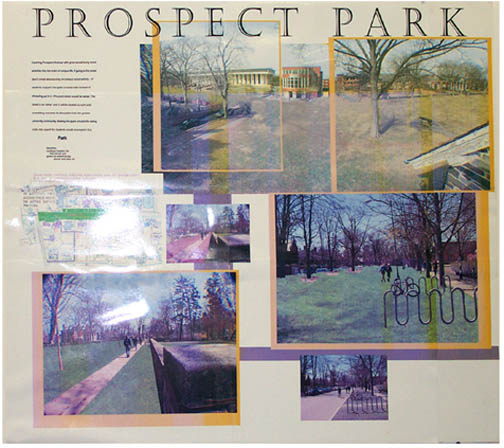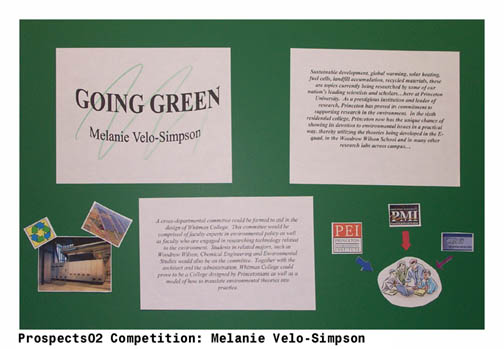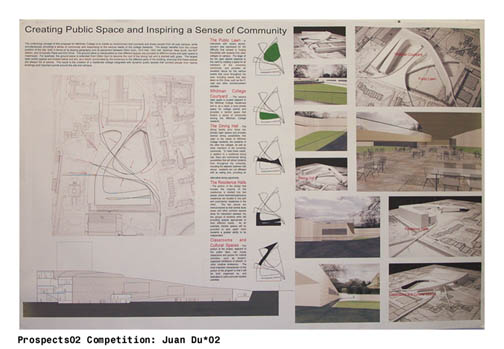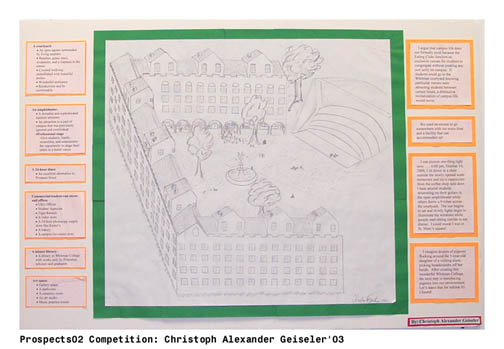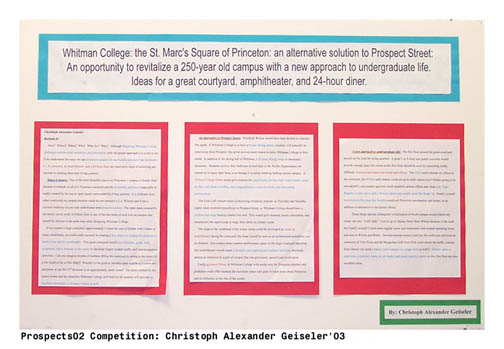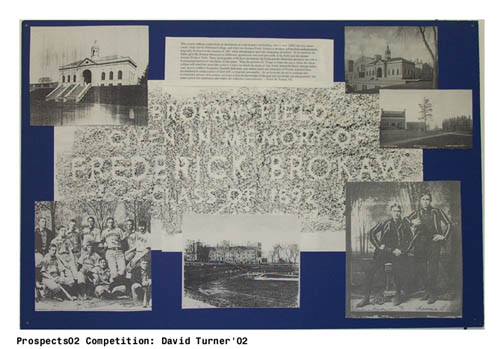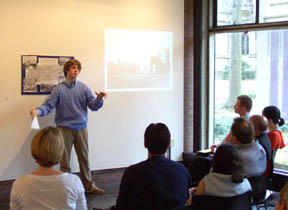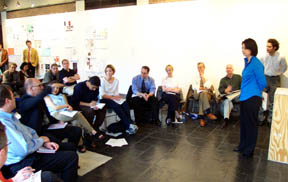|
Web Exclusives: Bonus Stories November 6, 2002: An opinion
With
all of the new construction occurring on campus, I knew that Princeton
would one day seem very different to me. I just didn’t expect
this to happen so soon. In mid-September, I read the final report
of the Four-Year College Program Planning Committee — the group
responsible for developing the social, dining, residential and educational
objectives for Whitman College and the other two planned four-year
residential colleges. At first, many of the ideas in the programming
committee’s report impressed me. But then I realized that the
Princeton described in the report was not the Princeton that I knew.
It
is truly unfortunate that the programming committee’s report
failed to engage this question. I’m otherwise enthusiastic
about the report’s goal of diversifying social options and
encouraging normative changes that will enable the viability of
new opportunities. However, I can’t understand why the report
articulated these visions in a vacuum. By not discussing the opportunities
and obstacles represented by the eating clubs, the report neglected
to grapple with the realities of campus social life in formulating
the four-year residential college system. I keep asking myself if
this was an effort to avoid controversy, or if the university has
a hidden agenda. Here’s
a doomsday scenario. Upon the opening of the four-year colleges,
many upperclassmen elect the four-year residency plan because of
its affordability compared to the high cost of eating club membership.
At the same time, the institution of a flexible dining plan makes
it easier for upperclassmen to choose independent status. These
two factors will likely lead to decreases in club membership. Lagging
club enrollment accompanied by rising cost of facility maintenance
and need for capital improvements could pose serious financial constraints
for the clubs and force some of them to close. As it has done in
the past, the university will purchase these defunct clubhouses
and convert them to academic or non-social functions. The remaining
clubs may be forced to raise membership fees to stay afloat. Inflated
club membership fees and fewer clubs to choose from could lead to
a socio-economic rift on campus between club members and independent
or four-year residential college students. This situation would
exacerbate existing racial and ethnic divisions on campus. But yet,
since the new four year college system will not offer alternative
venues for large groups of people to socialize, listen to live music,
dance, or drink, much of the student body will still migrate to
the street each weekend for entertainment. Consequently, the eating
clubs will subsidize the social life—and alcohol consumption—of
a student body that has grown by 500 students, even while enrollment
at the clubs is on the decline. To avoid financial ruin, the clubs
might cease to allow entrance to non-members, thereby intensifying
exclusivity at the street and severely limiting social options for
students who don’t join clubs. In the meantime, Princeton Borough
will intensify its use of public pressure and legal means to end
nightlife at the street. With this type of pressure on the eating
club system, a meltdown of some sort is inevitable.
Far
more favorable scenarios for the future of campus social life are
possible. I know this because students envisioned these scenarios.
During my senior year I was a part of a student group called Prospects
that sought to stimulate dialogue about the future of social life
at Princeton. Prospects organized a design competition in the spring
of 2001 asking for proposals, primarily from students, for how spaces
along Prospect Avenue could be enhanced, changed, redefined or added
to in ways that would create a more diverse, inclusive and stimulating
social life on campus. The competition received 50 energetic and
provocative proposals and a jury comprised of university officials,
trustees, professors and students met publicly to award $5000 in
prizes. A year later, Prospects organized a second design competition
asking students to generate proposals for Whitman College, the first
of the new four-year residential colleges. The second competition
received more than 65 entries and awarded $10,000 in prizes to the
winners. For more information, download the 2002 competition catalogue
below or check out www.princeton.edu/~rethink. Taken
as a group, the Prospects competition proposals illustrate how the
university could combine ambitious plans for the new four-year college
system with thoughtful initiatives at Prospect Avenue to improve
campus life comprehensively. The 2001 Prospects entries challenged
the university to reinvest in the street’s social geography
through urban design and policy initiatives. A number of the proposals
critiqued the university’s recent conversion of defunct clubs
into non-social spaces and its proliferation of new academic buildings
on Prospect Avenue, posing an alternative development model in which
the university creates spaces that would reinvigorate social life
at the street. Many entrants proposed building a performance hall,
galleries and art studios at available locations along the street,
citing the desperate need for these spaces on campus. Other entrants
advocated providing neutral social spaces at Prospect Avenue that
could be used by anyone for parties and other events. A number of
entrants proposed revitalizing the Third World Center (now the Carl
A. Fields Center for Equality & Cultural Understanding) or recommended
building a new cultural center at a central location on the street
to activate a spirit of multiculturalism. A few proposals even suggested
knocking down all physical barriers between the clubs and creating
a vast stretch of green space that students could freely traverse
and utilize for recreation. Pointing out that the university owns
much of the land surrounding the clubs, these proposals suggested
the possibility of far-reaching urban design initiatives. Accompanying
these urban designs were policy proposals aimed at making the clubs
more affordable, diverse and inclusive. One consistent proposal
was for the clubs and the university to coordinate purchasing, maintenance
and security operations to reduce membership costs and keep them
within reach of all students. Other proposals envisioned a highly
integrated dining plan allowing effortless meal exchange at any
club or university dining hall. As a body of ideas, the 2001 Prospects
proposals illustrated how an activist agenda on Prospect Avenue
could engender tremendous vitality at the street, while validating
the role of the clubs and improving their social contract with the
University. — Steve Caputo ’01 Steve Caputo majored in architecture and urban planning and received a certificate in East Asian Studies. He is currently working as a designer at Polshek Partnership in New York City. sacaputo@alumni.princeton.edu Write to PAW about this article.
|
||||||||||||||||||

